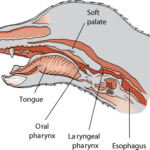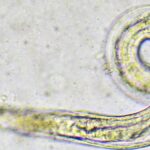What Can I Feed My Dog Instead Of Dog Food
Feeding Your Dog: Beyond the Bag of Kibble
As a responsible dog owner, you want to give your furry friend the best nutrition possible. However, you may wonder if commercial dog food is really the only option or even the healthiest one. In this article, we will explore some alternative foods and feeding methods for dogs that can help improve their overall well-being.
First, let’s clarify why you might consider feeding your dog anything other than commercial dog food. Some common reasons include:
– Concerns about the quality or safety of mass-produced pet food, especially after recalls or controversies
– Allergies or sensitivities to certain ingredients in dog food, such as grains, soy, dairy, or artificial additives
– Preference for a more natural or homemade diet that mimics what dogs ate before they were domesticated
– Health issues that require a specific diet, such as obesity, diabetes, kidney disease, or cancer
Of course, these reasons are not mutually exclusive or exhaustive. You may have your own motivations for seeking alternatives to dog food. Whatever they are, keep in mind that any change in your dog’s diet should be discussed with your veterinarian and done gradually to avoid digestive upset.
Now, let’s dive into some options for feeding your dog instead of dog food.
Raw Food Diet
One of the most controversial but also popular alternatives to commercial dog food is raw food. This means feeding your dog uncooked meat (muscle meat, organs, bones), eggs, fruits, vegetables, and sometimes supplements like fish oil or probiotics. The idea behind raw food is that dogs evolved to eat raw prey and therefore thrive on a similar diet that provides them with essential nutrients and enzymes.
Proponents of raw food claim that it can improve dogs’ coat condition, dental health, digestion, immunity, energy level, and lifespan. They also argue that raw food avoids many problems associated with processed dog food, such as preservatives, fillers, by-products, and low-quality protein sources. However, opponents of raw food warn that it can pose risks for bacterial contamination (such as Salmonella or E. coli), choking on bones, nutritional imbalances, and cost.
If you decide to try a raw food diet for your dog, make sure to research reputable sources and follow safe handling procedures. You may also need to supplement certain nutrients or consult with a veterinary nutritionist. Raw food diets are not suitable for every dog and should be approached with caution.
Home-Cooked Diet
Another alternative to commercial dog food is home-cooked meals that you prepare yourself using fresh ingredients. This allows you to control exactly what goes into your dog’s bowl and tailor the recipe to their specific needs or preferences. Home-cooked diets can include meat (cooked or raw), vegetables, fruits, grains (if tolerated), supplements, and sometimes dairy products like yogurt or cottage cheese.
The main advantage of home-cooked meals is that they can offer more variety, flavor, and nutrition than standard kibble. They can also be easier to digest for dogs who have trouble with processed foods or who need a low-fat or low-carb diet. Plus, making meals for your dog can be a fun bonding experience that shows them how much you care.
However, home-cooked diets also require more time, effort, and knowledge than buying a bag of dog food. You need to balance the ingredients carefully to avoid deficiencies or excesses of certain nutrients (such as calcium or vitamin D). You also need to cook the meat thoroughly to prevent infections and ensure that any bones are removed before serving. Moreover, some dogs may not like homemade food or may develop picky eating habits if they get used to customized meals.
If you want to try a home-cooked diet for your dog, seek guidance from a veterinary nutritionist or use recipes that have been approved by experts. You may also need to supplement certain nutrients or adjust the portions based on your dog’s weight and activity level. Home-cooked diets are not suitable for every dog and should be monitored closely.
Commercially Prepared Alternatives
If you don’t want to make your own dog food but still want to avoid commercial kibble, you can look for commercially prepared alternatives that offer natural or organic ingredients and fewer additives. For example, some companies make freeze-dried or dehydrated raw food that can be rehydrated with water before serving. Others offer cooked meals in pouches or cans that contain meat, vegetables, and supplements.
The advantage of these alternatives is that they save you time and effort while still providing your dog with a more wholesome diet than traditional dog food. They can also be convenient for travel or emergencies when you can’t cook for your dog. However, they may be more expensive than regular kibble and still contain some preservatives or fillers.
If you want to try commercially prepared alternatives for your dog, read the labels carefully and choose brands that use high-quality ingredients without artificial additives or by-products. You should also check with your veterinarian if your dog has any specific dietary needs or allergies.
Table Scraps and Treats
Finally, you may wonder if it’s okay to feed your dog table scraps, leftovers, or treats instead of dog food. The answer is both yes and no, depending on what you offer and how often.
Some human foods are safe and even healthy for dogs in moderation, such as:
– Lean meats (such as chicken, beef, turkey) without bones, skin, fat, seasoning
– Vegetables (such as carrots, green beans, celery) cooked or raw
– Fruits (such as apples, bananas, berries) without seeds or pits
– Eggs (cooked)
These foods can provide extra protein, fiber, vitamins, and minerals to your dog’s diet and may be less processed than commercial treats. However, you should avoid giving your dog foods that are toxic or harmful, such as chocolate, onions, garlic, grapes, raisins, avocado, nuts, spicy or fatty foods.
You should also be aware that feeding your dog too many table scraps or treats can lead to obesity, dental problems, digestive upset, allergies, or behavior issues. Treats should not exceed 10% of your dog’s daily caloric intake and should be given as rewards for good behavior or training purposes.
Conclusion
In conclusion, there are several options for feeding your dog instead of dog food that can offer various benefits and drawbacks. Raw food diets can provide a natural and nutrient-rich alternative but require caution and expertise. Home-cooked diets can offer customization and freshness but need careful planning and monitoring. Commercially prepared alternatives can save you time and effort but still contain some additives. And table scraps and treats can add flavor and nutrition as long as they are safe and balanced.
Ultimately, the best way to feed your dog depends on their individual needs, preferences, health status, and lifestyle. You should always consult with your veterinarian before making any changes to your dog’s diet and follow their recommendations based on scientific evidence and professional expertise. By providing your dog with a nutritious and enjoyable diet, you can help them live a long and happy life by your side. Woof woof!



